Deception in the animal kingdom takes many fascinating forms, from camouflage to mimicry. Among these masters of trickery, certain snake species have developed a remarkable behavioral adaptation: feigning sleep to avoid confrontation. This strategic “playing possum” isn’t mere coincidence but a sophisticated survival mechanism honed through evolutionary pressures. When threatened, these serpents enter a state of apparent dormancy, remaining motionless until the perceived threat—often a curious human or potential predator—moves along. This article explores the fascinating world of snakes that employ this clever defensive tactic, examining the species that use it, the biological mechanisms behind it, and what this behavior tells us about snake cognition and adaptation.
The Evolutionary Advantage of Playing Dead

In the harsh reality of nature, animals must develop effective defensive strategies to survive encounters with predators and threats. For many snake species, feigning sleep or death represents a remarkable evolutionary adaptation that serves as a last-resort defense mechanism. When traditional options like fleeing or fighting prove too risky, appearing dormant can convince predators to lose interest and move on. This behavior is particularly advantageous for snakes that lack venom or significant size to defend themselves effectively. The success of this strategy has been proven through natural selection, as individuals with the genetic predisposition to “play dead” successfully avoided predation and passed these traits to subsequent generations, reinforcing the behavior throughout the species.
The Hognose Snake: Master of Deception
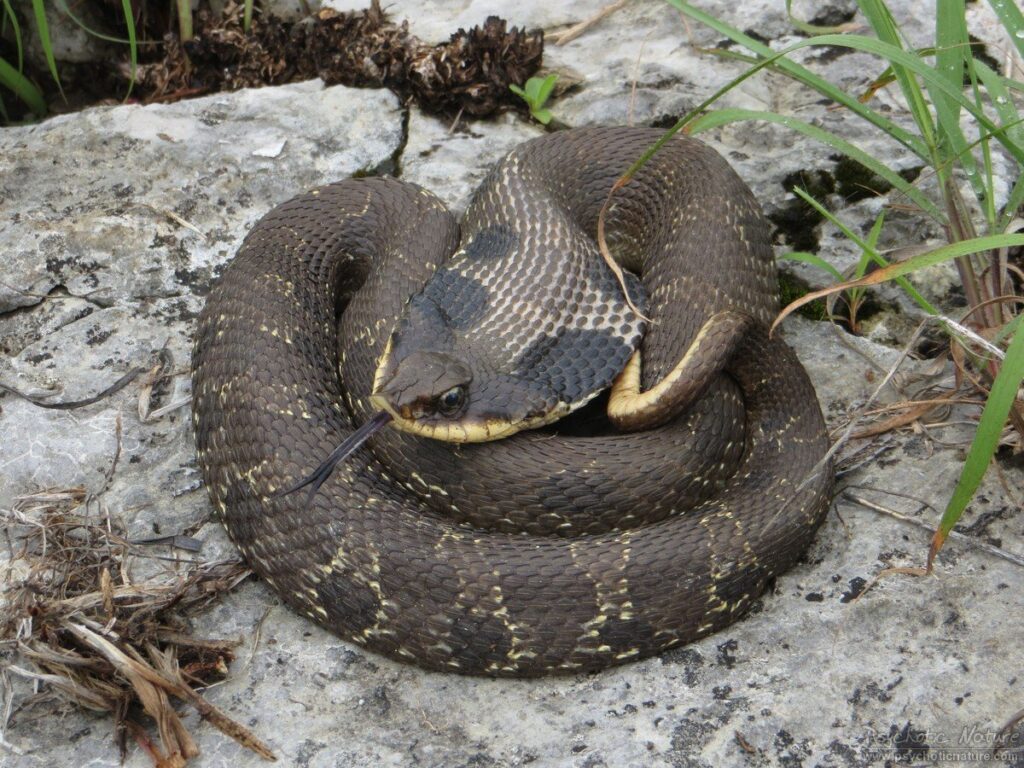
The Eastern Hognose Snake (Heterodon platirhinos) stands out as perhaps the most theatrical performer of fake sleep or death among serpents. When threatened, this species engages in an elaborate display beginning with hood-spreading and hissing, similar to a cobra. If this intimidation fails, the hognose takes its performance to Oscar-worthy levels by rolling onto its back, opening its mouth, letting its tongue hang out, and remaining completely still. The snake may even release a foul-smelling musk and defecate to enhance the illusion of death. What makes the hognose’s performance particularly convincing is its commitment to the role—if flipped right-side up during this display, it will immediately roll onto its back again, as though insisting on its “deceased” state until the threat passes completely.
The Biological Mechanisms Behind Apparent Sleep
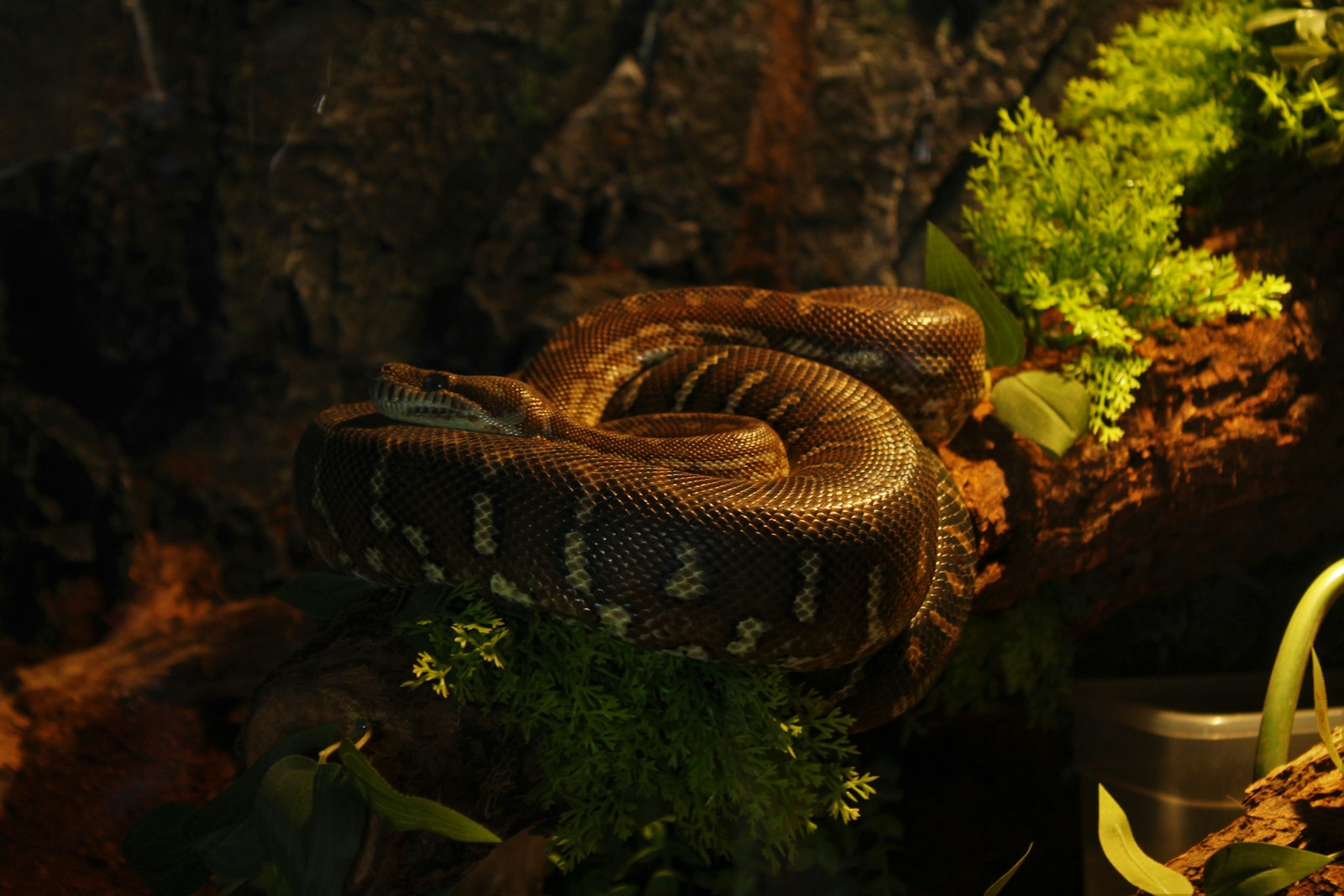
The physiological processes underlying a snake’s ability to feign sleep involve complex neurological and hormonal responses triggered by perceived threats. When faced with danger, the snake’s sympathetic nervous system activates, but instead of initiating the typical “fight or flight” response, it triggers a parasympathetic override resulting in a state of immobility. During this state, the snake’s heart rate typically slows, muscle tone decreases, and respiration becomes shallow and barely perceptible. Some species can maintain this state for remarkable periods—from minutes to hours—depending on the persistence of the threat. Researchers have observed that while in this state, snakes maintain some level of environmental awareness, as they can “revive” quickly if the threat intensifies or moves too close, suggesting this is a controlled response rather than a reflexive shutdown.
Death Adders: Lethal Ambush Predators with a Twist

Death adders (Acanthophis species) employ a fascinating variation of the fake sleep strategy, though with a predatory rather than defensive purpose. These venomous Australian snakes are renowned for their patient hunting technique, remaining perfectly motionless for days while partially buried in leaf litter or sand. With only their tail tip visible, they wiggle it to mimic the movement of a worm or grub, enticing prey to come within striking distance. What’s remarkable about death adders is that even when discovered by humans or potential threats, they often maintain this motionless state rather than fleeing, effectively “pretending to sleep” until the threat passes. This commitment to immobility serves them doubly—as both hunting strategy and defensive mechanism—making them among nature’s most patient and deceptive predators.
Differentiation from True Sleep States

The “sleep pretending” behavior exhibited by certain snake species differs significantly from actual reptilian sleep. True sleep in snakes involves specific brain wave patterns, regular breathing, and a natural resting position typically in a coiled or relaxed posture. In contrast, defensive immobility or thanatosis (playing dead) is characterized by abnormal posturing—often with the belly exposed—irregular or barely perceptible breathing, and the potential for immediate alertness if the threat becomes too proximate. Researchers can distinguish between these states through measurement of stress hormones like corticosterone, which remain elevated during defensive immobility but decrease during genuine sleep. Additionally, thermal imaging reveals different body temperature patterns between snakes in defensive immobility versus natural sleep states, with the former maintaining higher readiness for rapid movement if necessary.
Geographic Distribution of Sleep-Feigning Species
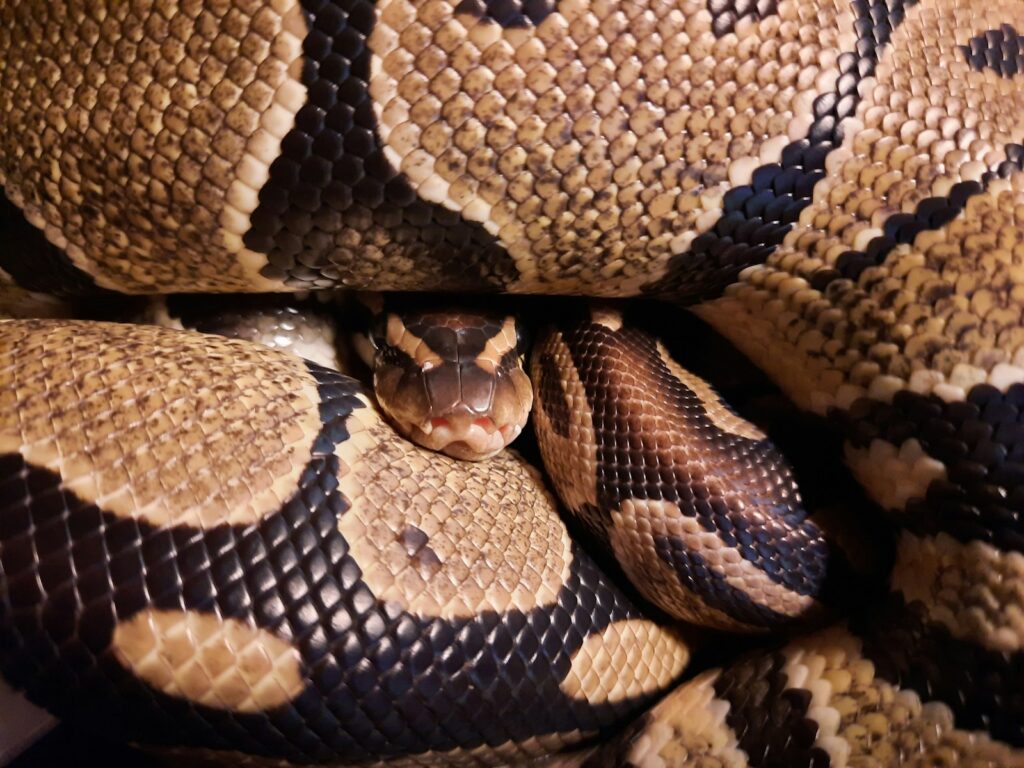
The fascinating behavior of feigning sleep or death is not limited to snakes from any single region but appears across multiple continents and habitats. North American species including various hognose snakes (Heterodon species) and certain garter snakes (Thamnophis) frequently display this behavior when confronted by threats. In South America, some members of the Dipsadidae family employ similar tactics when cornered. Australian death adders and certain elapids have developed their variations of immobility as both hunting and defensive strategies. African egg-eating snakes (Dasypeltis species) are known to go completely limp when handled, appearing to be unconscious until the threat passes. This widespread geographic distribution of similar behaviors across unrelated species represents a remarkable case of convergent evolution, where similar environmental pressures have led to the independent development of comparable survival strategies across diverse snake lineages.
The Psychological Aspects of Predator Deception
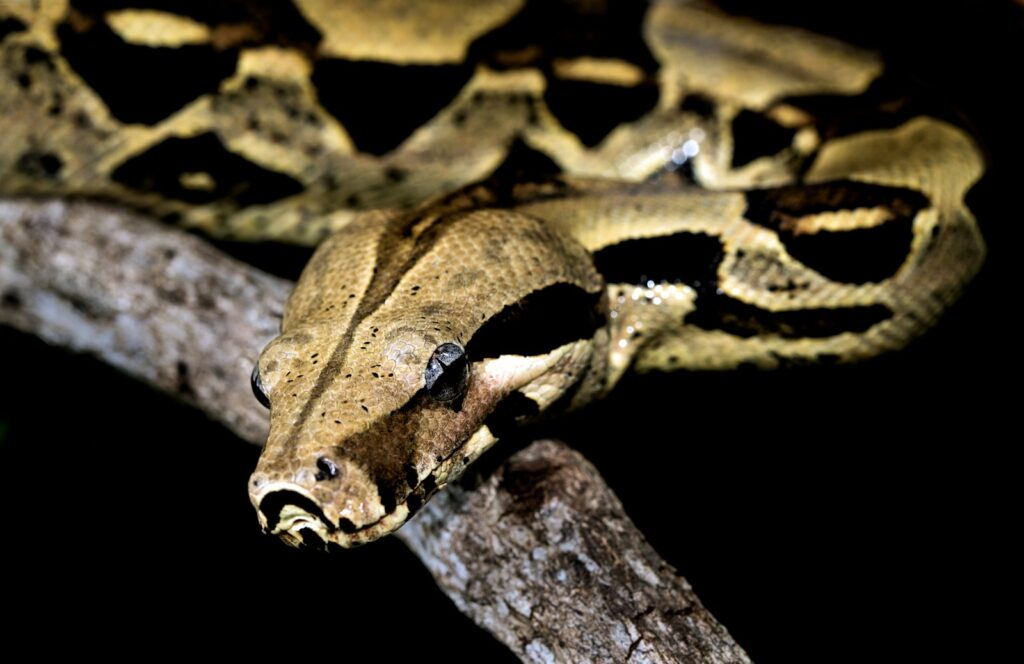
The success of a snake’s sleep-feigning behavior hinges on exploiting specific psychological aspects of predator perception and behavior. Many predators are triggered to attack by movement, and their hunting instincts may diminish when confronted with an apparently dead or dormant prey item. This exploitation of predator psychology works particularly well against animals that prefer fresh kills and may avoid consuming carrion due to the risk of disease or toxins. Furthermore, playing dead can confuse predators whose attack sequences depend on specific prey responses—when the snake doesn’t react as expected, the predator’s predatory sequence may be interrupted. Research has shown that predators like hawks, foxes, and even domestic cats will frequently lose interest in a snake that remains completely motionless, demonstrating how effectively this simple strategy manipulates predator behavior through psychological rather than physical means.
The Grass Snake’s Theatrical Performance
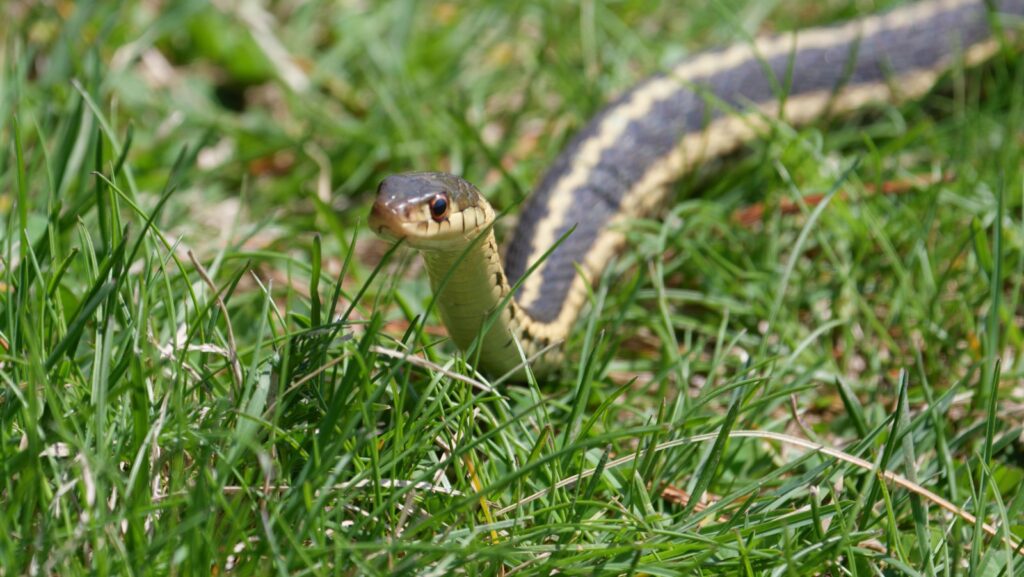
The European grass snake (Natrix natrix) delivers one of the most convincing “death performances” in the reptile world when threatened. Unlike species that simply remain still, grass snakes engage in a complex behavioral sequence that begins with contorting their bodies, opening their mouths wide, and often exposing their undersides in an unnatural position. To enhance the illusion of death, they secrete a foul-smelling fluid from their cloaca and may even begin to bleed from the mouth and nose—not from actual injury, but as part of their defensive display. Perhaps most remarkably, grass snakes can control their muscle tension to become completely limp when handled, giving the impression of rigor mortis setting in. These snakes maintain this elaborate charade sometimes for over 30 minutes, only “reviving” and slithering away when they perceive the coast is clear, often startling observers who genuinely believed the snake was deceased.
Human Encounters and Misinterpretations
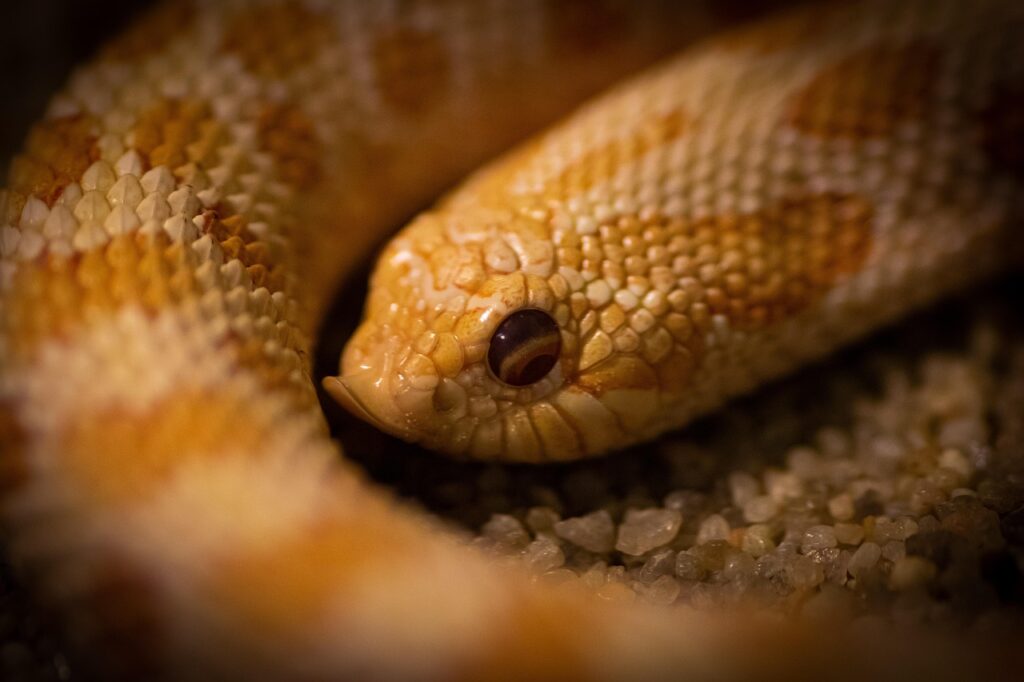
Human encounters with sleep-feigning snakes often lead to misunderstandings and potentially dangerous situations. Many people stumbling upon an immobile snake might assume it’s sleeping or already dead, leading them to approach too closely or even attempt to handle the animal. This misconception can be particularly problematic with venomous species like certain vipers that remain motionless as a hunting strategy rather than a defensive one. Wildlife experts caution that what appears to be a docile or sleeping snake might actually be a highly alert animal making strategic decisions about when to move. Tragically, some snakes exhibiting this behavior have been needlessly killed by humans who, upon seeing the snake “revive,” believe it was preparing to attack rather than simply attempting to escape once the perceived threat had passed. Education about this behavior is crucial for promoting human safety and snake conservation alike.
The Role of Immobility in Predator-Prey Coevolution
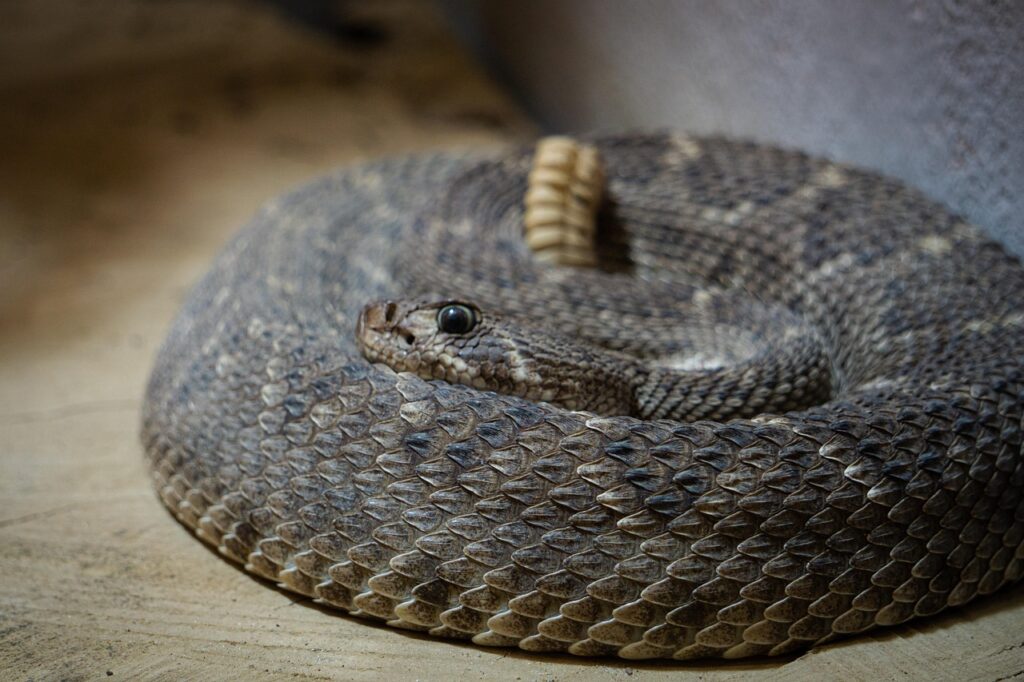
The evolutionary development of sleep-feigning behavior represents a fascinating chapter in the ongoing “arms race” between predators and prey. As predators evolved more sophisticated hunting strategies, prey species including certain snakes developed increasingly convincing immobility displays as countermeasures. This coevolutionary process has led to remarkable refinements in both the snake’s performance and the discrimination abilities of its predators. Some predator species have subsequently developed methods to test whether prey is truly dead, such as repeated prodding or waiting nearby to observe any movement. In response, sleep-feigning snakes have evolved longer immobility periods and more convincing physiological displays, including odour release and muscle limpness. This back-and-forth evolutionary progression demonstrates the incredible adaptive capacity of species responding to selection pressures, with each innovation on one side prompting a counter-adaptation on the other.
Scientific Research and Remaining Mysteries
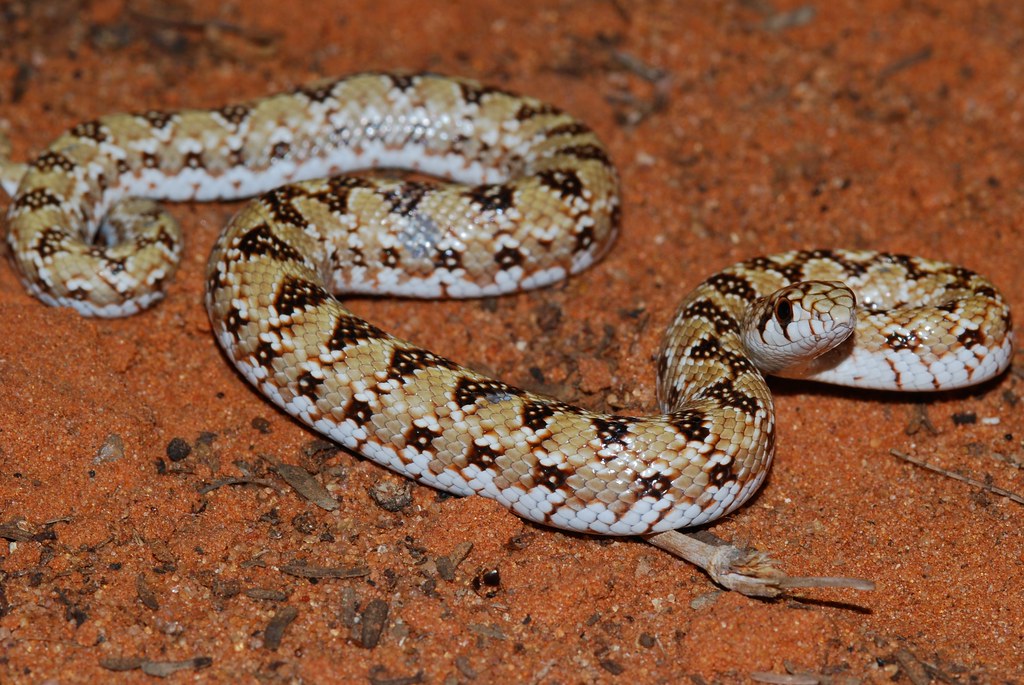
Despite significant advances in understanding thanatosis in snakes, numerous questions remain unanswered about this intriguing behavior. Researchers continue to investigate whether this response is entirely innate or if there are learned components that improve the performance with experience. The neurological pathways controlling the switch between active defense and immobility remain incompletely mapped, presenting an active area of herpetological research. Some scientists are exploring whether individual snakes show consistent personality differences in their propensity to use immobility versus other defensive tactics. Additionally, comparative studies across species are attempting to determine why some closely related snakes employ this strategy while others do not, potentially uncovering new insights about habitat pressures and evolutionary history. Modern research techniques including neuroimaging, genetic analysis, and field experiments with camera traps are gradually unveiling the complexities behind this seemingly simple but remarkably effective survival strategy.
Conservation Implications of Defensive Behaviors
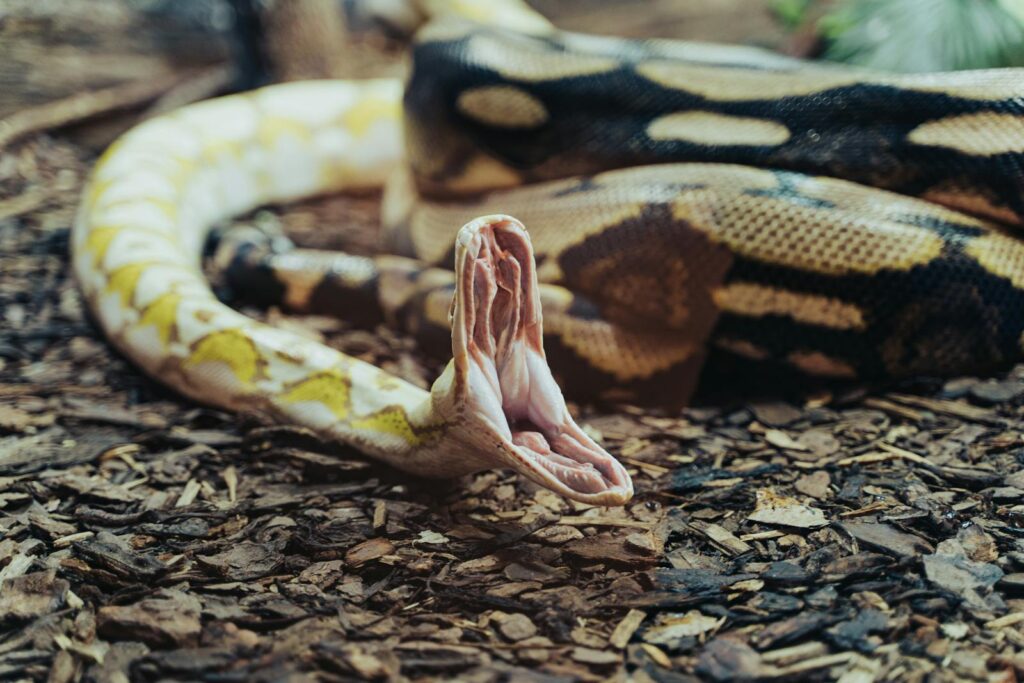
The sleep-feigning behavior that serves snakes so well against natural predators often becomes a liability in human-dominated landscapes. Species that respond to threats by freezing rather than fleeing are particularly vulnerable to vehicle strikes on roads, as their evolutionary programming leads them to remain motionless rather than escape approaching cars. Conservation efforts for species like hognose snakes must account for these behavioral traits when designing protection strategies. Wildlife corridors and road underpasses must be specifically engineered to reduce the likelihood of snakes entering roadways where their natural defenses become maladaptive. Additionally, public education programs about these defensive behaviors can reduce intentional killings based on misunderstandings of snake intentions. Conservation biologists recognize that preserving not just snake populations but the full range of their natural behaviors is essential for maintaining healthy ecosystems where these remarkable reptiles can continue their important roles as both predators and prey.
Cultural Perceptions and Folklore
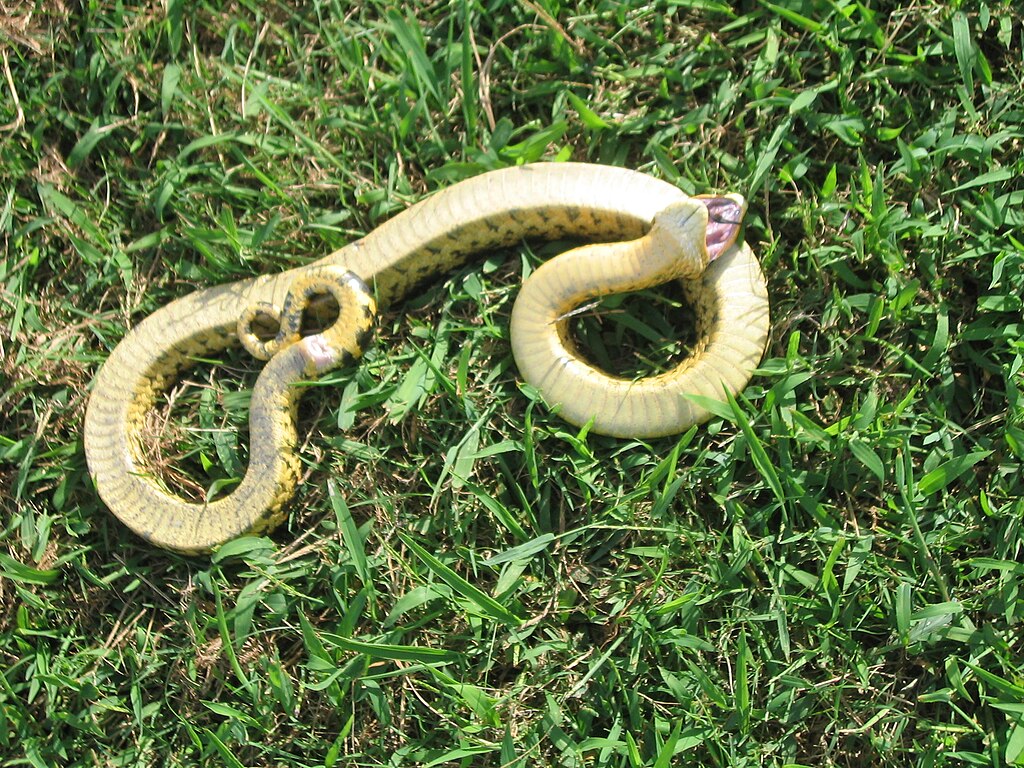
Snake deception behaviors have fascinated humans throughout history, influencing cultural perceptions and folklore around the world. In many Native American traditions, the hognose snake’s dramatic death-feigning earned it nicknames like “puff adder” or “drama snake,” with stories often portraying it as a trickster character. European folklore contains numerous references to “resurrection snakes” that could seemingly return from death, likely based on observations of grass snakes’ convincing thanatosis displays. In parts of Asia, snakes that appear to sleep or die before reviving are sometimes associated with spiritual significance or rebirth symbolism. These cultural interpretations reveal humanity’s longstanding fascination with and misunderstanding of snake behavior. Interestingly, the scientific term “thanatosis” comes from Thanatos, the Greek personification of death, demonstrating how even our scientific classification of this behavior is influenced by cultural perspectives on the boundary between sleep, death, and revival.
Conclusion

The remarkable ability of certain snake species to “play possum” until danger passes represents one of nature’s most effective defensive adaptations. From the theatrical performances of hognose snakes to the subtle immobility of vipers, this behavior demonstrates the incredible diversity of survival strategies that have evolved in the reptile world. What might appear to human observers as a simple case of “playing dead” actually involves complex neurological processes, sophisticated predator psychology exploitation, and millions of years of evolutionary refinement. As we continue to study these fascinating behaviors, we gain not only scientific knowledge about snake biology but also a deeper appreciation for the remarkable adaptability of life in response to environmental challenges. The next time you encounter a seemingly sleeping snake in the wild, remember—it might just be waiting for you to leave.





